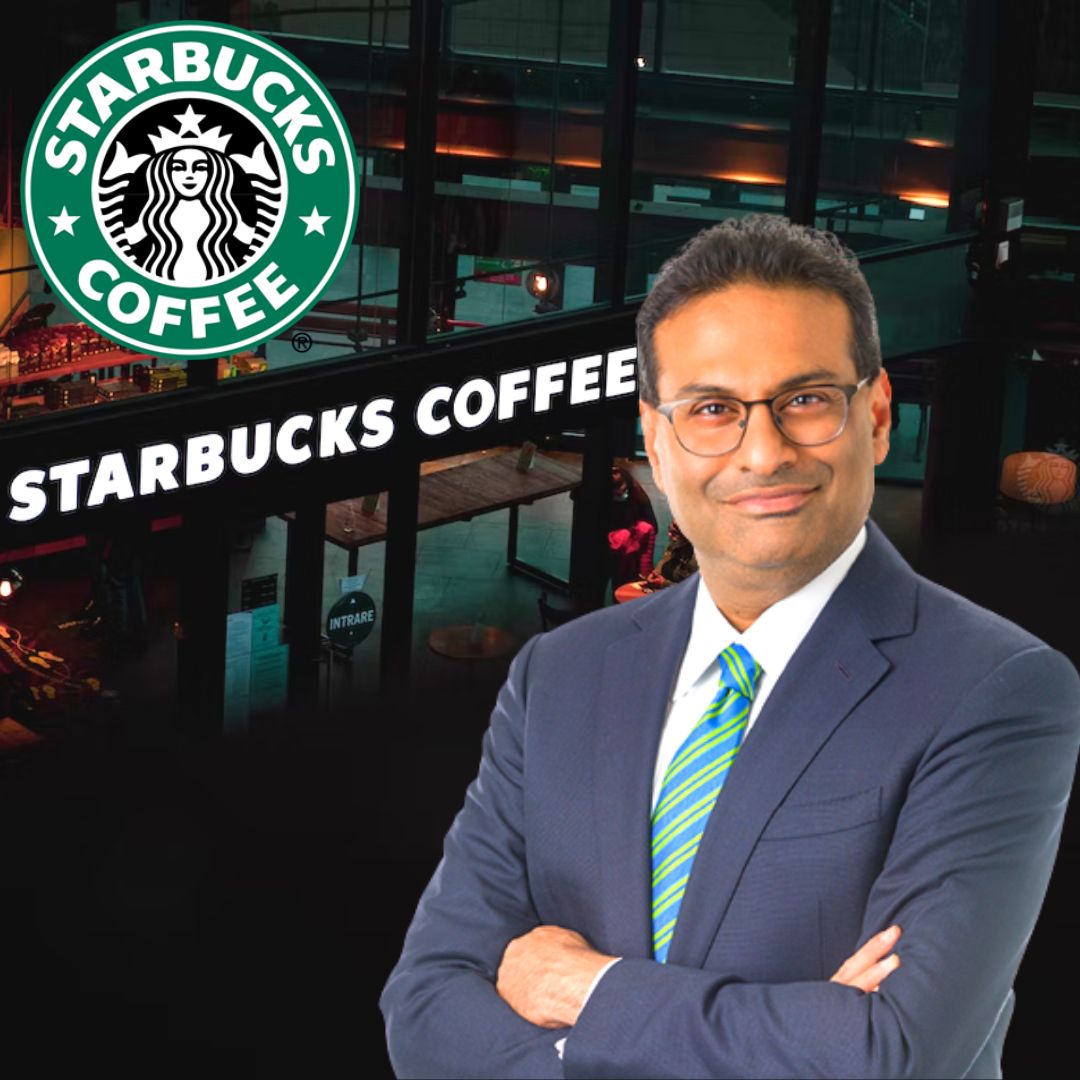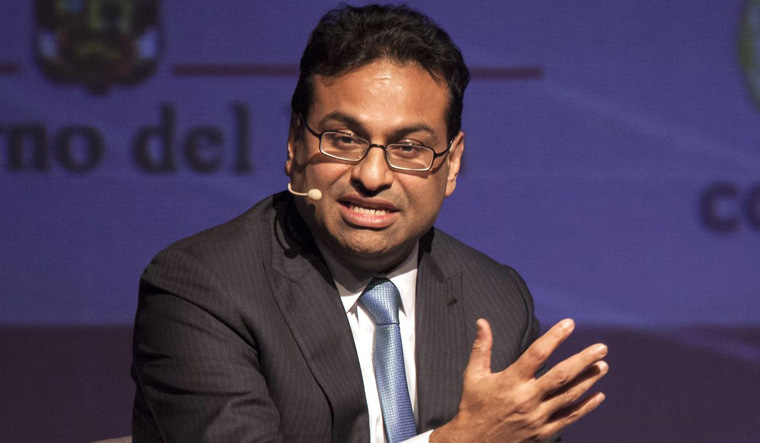Leadership and Vision

Starbucks, under the leadership of Laxman Narasimhan, has undergone a significant transformation, navigating the challenges of a changing consumer landscape and the global pandemic. Narasimhan’s leadership style and vision have played a crucial role in shaping the company’s trajectory.
Starbucks’ Vision and Mission
Starbucks’ vision, “to inspire and nurture the human spirit – one person, one cup, and one neighborhood at a time,” remains unchanged under Narasimhan. However, his focus on operational excellence and customer experience has been instrumental in translating this vision into concrete actions. The company’s mission statement emphasizes “creating a culture of belonging, inclusion, and diversity.” This mission is reflected in Starbucks’ commitment to social responsibility initiatives and its efforts to foster a diverse and inclusive workplace.
Key Initiatives and Strategies
Narasimhan has implemented several key initiatives to achieve Starbucks’ goals, focusing on:
- Digital Transformation: Starbucks has invested heavily in digital technologies to enhance customer experience, including mobile ordering, personalized recommendations, and loyalty programs. The company’s “Starbucks Rewards” program has been a significant success, driving customer engagement and loyalty.
- Operational Efficiency: Narasimhan has emphasized operational efficiency by streamlining processes, optimizing supply chains, and focusing on cost management. This has helped to improve profitability and drive growth.
- Global Expansion: Starbucks continues to expand its global footprint, focusing on emerging markets with high growth potential. This strategy aims to increase market share and reach new customer segments.
- Sustainability: Starbucks has committed to sustainability initiatives, including reducing its environmental footprint and promoting ethical sourcing practices. This commitment is crucial for attracting environmentally conscious consumers and building a sustainable business model.
Shaping Starbucks’ Corporate Culture, Ceo of starbucks
Narasimhan’s leadership style is characterized by a focus on collaboration, innovation, and customer-centricity. He has emphasized the importance of building a strong and inclusive corporate culture that values diversity, equity, and inclusion.
- Employee Empowerment: Starbucks has a strong emphasis on employee empowerment, providing training and development opportunities to support career growth. The company’s “partner” program emphasizes the importance of its employees and their role in delivering exceptional customer experiences.
- Community Engagement: Starbucks actively engages with local communities, supporting initiatives that promote education, economic development, and social justice. This commitment reflects the company’s values and its desire to be a responsible corporate citizen.
Business Performance and Strategy

Starbucks’ financial performance under the current CEO, Howard Schultz, has been a rollercoaster ride. After a period of strong growth and expansion, the company faced challenges such as declining sales and increased competition. However, Schultz’s strategic approach has helped to stabilize the company and drive growth once again.
Financial Performance
Starbucks’ financial performance under Howard Schultz has been marked by periods of both growth and decline. After a period of rapid expansion in the early 2000s, the company faced challenges such as declining sales and increased competition. However, Schultz’s strategic approach has helped to stabilize the company and drive growth once again.
- Starbucks’ revenue has grown steadily in recent years, reaching $32.3 billion in fiscal year 2022. This growth has been driven by factors such as new store openings, product innovation, and increased customer engagement.
- Starbucks’ net income has also been strong, reaching $4.2 billion in fiscal year 2022. This profitability has been driven by factors such as cost control, efficiency improvements, and a focus on premium pricing.
- Starbucks’ stock price has also performed well, increasing by over 200% since Schultz returned as CEO in 2017. This strong performance reflects investor confidence in the company’s future prospects.
Key Business Strategies
Howard Schultz has implemented a number of key business strategies to drive Starbucks’ growth and profitability. These strategies include:
- Market Expansion: Starbucks has continued to expand its global footprint, opening new stores in both developed and emerging markets. This expansion has been driven by a number of factors, including the growing demand for coffee around the world and the company’s strong brand recognition.
- Product Innovation: Starbucks has been consistently innovating its product offerings, introducing new beverages, food items, and merchandise. This innovation has helped to keep customers engaged and excited about the Starbucks brand. Recent examples include the launch of the “Nitro Cold Brew” and the “Oatmilk Shaken Espresso.”
- Customer Engagement: Starbucks has made significant investments in its digital capabilities, such as its mobile ordering and payment app, to improve the customer experience. This focus on customer engagement has helped to drive customer loyalty and repeat business.
Impact of CEO’s Decisions
Howard Schultz’s decisions have had a significant impact on Starbucks’ profitability and market share. For example, his focus on customer engagement has helped to drive customer loyalty and repeat business. His decision to invest in digital capabilities has also helped to improve the customer experience and drive sales.
Comparison with Previous CEOs
Howard Schultz’s strategic approach differs from that of previous CEOs in a number of ways. For example, Schultz has placed a greater emphasis on customer engagement and digital innovation than his predecessors. He has also been more aggressive in expanding Starbucks’ global footprint.
“We’re not just selling coffee, we’re selling an experience.” – Howard Schultz
Challenges and Opportunities: Ceo Of Starbucks

The current CEO of Starbucks faces a dynamic landscape, navigating a complex mix of challenges and opportunities. While the company has enjoyed significant success, it’s not without its hurdles, particularly in the face of evolving consumer preferences, intensified competition, and economic uncertainties.
Challenges Faced by Starbucks
Starbucks, like any major corporation, faces a number of challenges in the current market. These challenges can be categorized as follows:
- Competition: The coffee industry is increasingly competitive, with new players emerging and established brands expanding their offerings. Starbucks faces competition from both specialty coffee shops and fast-food chains that are incorporating coffee into their menus. For example, Dunkin’ Donuts has been aggressively expanding its coffee offerings, while McDonald’s has invested heavily in its McCafe line.
- Changing Consumer Preferences: Consumer tastes are constantly evolving, with a growing demand for healthier and more sustainable options. Starbucks has responded to this trend by introducing new plant-based options and emphasizing its commitment to ethical sourcing. However, it still faces pressure to keep up with the changing preferences of its customer base, particularly among younger generations who are increasingly interested in unique and artisanal coffee experiences.
- Economic Fluctuations: Starbucks, like any business, is susceptible to economic fluctuations. During periods of economic downturn, consumers may cut back on discretionary spending, which can impact sales at coffee shops. The recent COVID-19 pandemic highlighted the vulnerability of the coffee industry to economic shocks, as lockdowns and social distancing measures led to a decline in foot traffic at Starbucks stores.
CEO’s Approach to Addressing Challenges
The CEO of Starbucks has taken a proactive approach to addressing these challenges, focusing on several key initiatives:
- Innovation: Starbucks has consistently invested in innovation, introducing new products and services to stay ahead of the competition. For example, the company has expanded its mobile ordering and payment capabilities, introduced new cold brew and nitro cold brew offerings, and experimented with plant-based alternatives like the Oatmilk Latte. These initiatives aim to cater to evolving consumer preferences and attract new customers.
- Customer Experience: Starbucks has prioritized enhancing the customer experience, focusing on personalized service and a welcoming atmosphere. The company has invested in employee training programs to ensure consistent service quality and has implemented digital initiatives to provide a more convenient and engaging experience for customers. Starbucks has also been focusing on creating a more inclusive and welcoming environment for all customers.
- Sustainability: Starbucks has made sustainability a core pillar of its business strategy. The company has committed to sourcing ethically and sustainably, reducing its environmental footprint, and supporting local communities. These initiatives aim to appeal to environmentally conscious consumers and strengthen the company’s brand reputation.
Opportunities for Starbucks
Despite the challenges, Starbucks also enjoys a number of opportunities for future growth:
- Global Expansion: Starbucks has a significant opportunity for continued growth in international markets. The company has already established a strong presence in Asia and Europe, but there is still room for expansion in emerging markets like Africa and Latin America. This expansion can be achieved through strategic partnerships, acquisitions, and organic growth.
- Digital Transformation: The digital landscape offers significant opportunities for Starbucks. The company can leverage its mobile ordering and payment platform to enhance customer engagement, personalize offers, and collect valuable data about customer preferences. Starbucks can also explore new digital channels like social media and e-commerce to reach a wider audience and drive sales.
- New Product Categories: Starbucks can expand its product offerings beyond coffee to cater to evolving consumer preferences. The company has already introduced tea, smoothies, and other beverages, but there is still room for further diversification. For example, Starbucks could explore plant-based food options, healthy snacks, or even personalized coffee subscriptions.
Summary of Challenges and Opportunities
The following table summarizes the key challenges and opportunities facing Starbucks, along with the CEO’s approach to addressing them:
| Challenge | Opportunity | CEO’s Approach |
|---|---|---|
| Competition | Global Expansion | Innovation, Customer Experience, Sustainability |
| Changing Consumer Preferences | Digital Transformation | Innovation, Customer Experience, Sustainability |
| Economic Fluctuations | New Product Categories | Innovation, Customer Experience, Sustainability |
Ceo of starbucks – You know how Starbucks is always trying to stay ahead of the game? Well, their CEO might want to take a page from Brian Niccol’s playbook. Check out brian niccol wikipedia to see how he turned Domino’s around. Maybe a little pizza inspiration could help Starbucks spice things up!